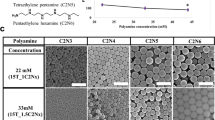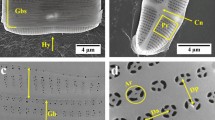Abstract.
Silicon (although never in the elemental form) is present in all living organisms and is required for the production of structural materials in single-celled organisms through to higher plants and animals. Hydrated amorphous silica is a mineral of infinite functionality and yet it is formed into structures with microscopic and macroscopic form. Research into the mechanisms controlling the process have highlighted proteins and proteoglycans as possible control molecules. Such molecules are suggested to play a critical role in the catalysis of silica polycondensation reactions and in structure direction. This article reviews information on silica form and function, silica condensation chemistry, the role of macromolecules in structure control and in vitro studies of silica formation using biomolecules extracted from biological silicas. An understanding of the mechanisms by which biological organisms regulate mineral formation will assist in our understanding of the essentiality of silicon to life processes and in the generation of new materials with specific form and function for industrial application in the 21st century.
Similar content being viewed by others
Author information
Authors and Affiliations
Additional information
Electronic Publication
Rights and permissions
About this article
Cite this article
Perry, C., Keeling-Tucker, T. Biosilicification: the role of the organic matrix in structure control. J. Biol. Inorg. Chem. 5, 537–550 (2000). https://doi.org/10.1007/s007750000130
Received:
Accepted:
Issue Date:
DOI: https://doi.org/10.1007/s007750000130




